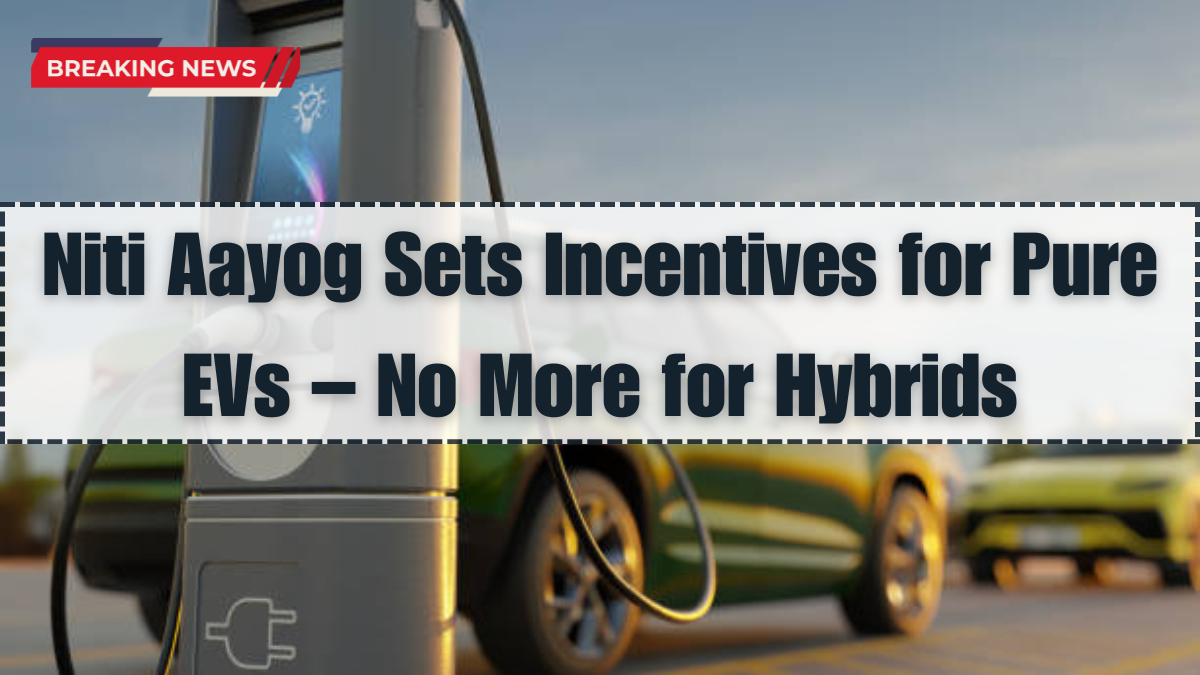India’s central planning body, Niti Aayog, has formally declared a policy shift in 2025 that favors zero emission vehicles exclusively. According to the latest update, central government subsidies and tax incentives will now be restricted only to Battery Electric Vehicles (BEVs), eliminating support for hybrids and plug-in hybrids. The goal is clear: push India towards a cleaner, full-electric mobility future.
This move comes amid rising EV adoption rates and a strong focus on reducing India’s dependence on fossil fuels. The announcement marks a definitive stance on which technologies the government is willing to support under the national electric vehicle roadmap.

Why Niti Aayog Supports Only BEVs
The decision to exclude hybrids and plug-in hybrids from incentives is rooted in emissions data and long-term climate goals. Here’s the rationale:
-
BEVs produce zero tailpipe emissions, unlike hybrids which still rely on fossil fuels
-
Policy clarity encourages manufacturers to invest fully in electric platforms
-
Reduced reliance on imported fuel aligns with energy security goals
-
Simplifies subsidy frameworks under schemes like FAME and PLI
This makes zero emission vehicles the sole focus of future central EV policies.
What This Means for Consumers and Automakers
The policy change has significant implications across the board. Here’s how it impacts various stakeholders:
For Consumers:
-
Subsidies, tax rebates, and road tax exemptions now apply only to zero emission vehicles
-
Hybrid car buyers will face higher upfront costs with no financial support
-
BEVs will become more affordable than hybrids in the long run
For Automakers:
-
Companies like Toyota, Honda, and Maruti will need to shift focus from hybrids to BEVs
-
EV-focused players like Tata, Mahindra, and Ola stand to gain market share
-
R&D investment in hybrid tech may slow down as BEVs take priority
This policy may prompt a faster transition to electric-only platforms among carmakers operating in India.
Comparison: BEV vs Hybrid Incentives
Below is a table that compares how the updated policy treats BEVs versus hybrids:
| Feature | BEV (Battery Electric) | Hybrid (Petrol + Electric) |
|---|---|---|
| Central Subsidy Eligibility | ✅ Yes | ❌ No |
| Road Tax Exemption (Select States) | ✅ Yes | ❌ No |
| FAME-II Benefits | ✅ Yes | ❌ No |
| PLI Eligibility | ✅ Yes | ❌ No |
| Tailpipe Emissions | 0 g/km | ~100–120 g/km |
Clearly, zero emission vehicles are the exclusive beneficiaries of India’s national EV incentive structure in 2025.
Long-Term Impact on India’s EV Ecosystem
Niti Aayog’s directive aligns with India’s goal to reach net-zero emissions by 2070. The shift to only incentivizing zero emission vehicles will:
-
Drive faster adoption of clean technologies
-
Push manufacturers to focus solely on BEVs
-
Promote local battery and EV component manufacturing
-
Reduce environmental and health-related costs from urban air pollution
It also places India in line with global leaders like Norway and the UK, who are also phasing out hybrid incentives in favor of pure electrics.
FAQs
What are zero emission vehicles (ZEVs)?
ZEVs are vehicles that produce no tailpipe emissions—Battery Electric Vehicles (BEVs) are the most common type of ZEVs.
Will I get subsidies if I buy a hybrid car?
No. As of 2025, the Indian government offers subsidies only for BEVs. Hybrids are no longer eligible for central incentives.
Why are hybrids excluded from subsidies now?
Because hybrids still use fossil fuels and produce emissions, the government is promoting only zero emission vehicles to meet its climate targets.
Which companies will benefit from this policy?
EV-first brands like Tata Motors, Mahindra Electric, and startups like Ola Electric are expected to benefit most from this BEV-only incentive policy.
Will states also stop supporting hybrids?
While this is a central policy, many states are expected to follow suit and align their EV subsidy programs with the center’s BEV-only focus.
Click here to know more.

